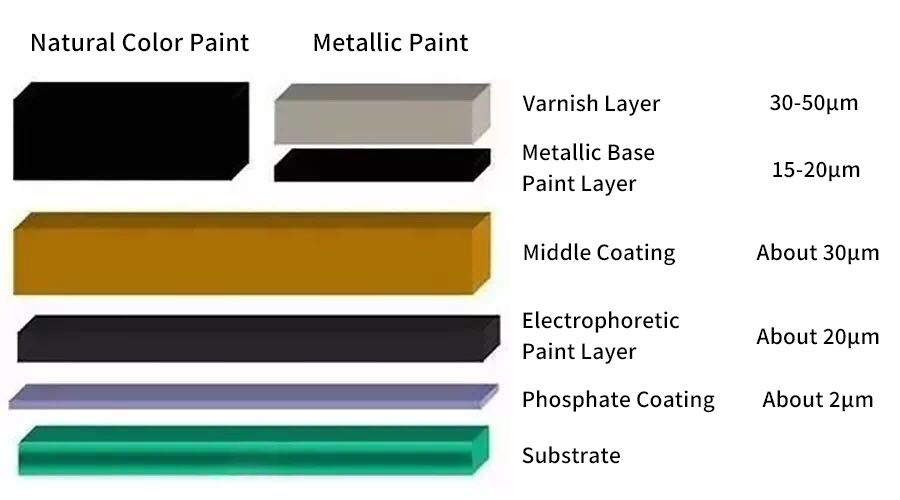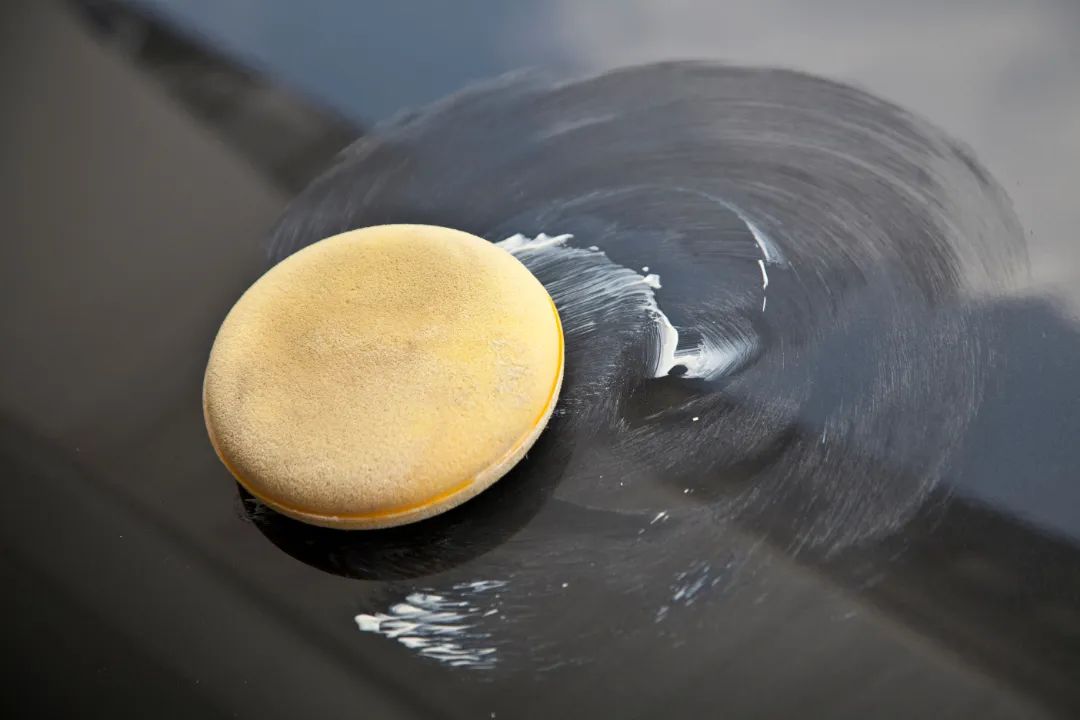Although paint protection film is indeed much better at protecting car paint than other car beauty projects such as coating and crystal coating, projects that cost hundreds or thousands of dollars still make most consumers stay away from them.
Is it really necessary to apply such expensive paint protection film?
Today, we will analyze in detail the composition of car paint and the differences between several car beauty projects. If you are hesitating whether to apply paint protection film or not, you may wish to continue reading.
Why does the car's paint need to be protected?
Before understanding various car beauty projects, we need to have a systematic understanding of the car body paint. As the outermost layer of the car body surface, the role of car paint is first to prevent rust and corrosion on the metal surface, ensure the integrity and durability of the entire car surface, and of course, more importantly, make the entire car dazzling. The composition of car paint is not simple. From bottom to top, it consists of electrophoretic layer, primer, color paint and varnish.
(The following figure is a schematic diagram of the original paint structure.)

Color paint is mainly used to show the color of the car body, so it is also the most studied and designed layer of paint. Designers will design beautiful car body curves, and the layered car paint can help show the light and shadow changes of the car body curves; at the same time, it will also give consumers more diverse sensory stimulation.
By adding some metal particles or mica particles during the paint preparation process, the two most common effects of "metallic paint" and "pearlescent paint" are formed. Of course, the more particles are added, the higher the process and cost required, so more expensive models often have more shining paint.
However, paint is very soft and fragile. If it is not protected, it will become dull and lose its color in a short time, just like a billboard that is often exposed to the outside.
So how to protect it? Mainly rely on varnish.
Clearcoat is a hard and smooth protective layer on the top of the paint surface to prevent the color paint from fading and cracking. Generally, clearcoat is colorless, so it will bring a "transparent" effect. At the same time, because the clearcoat layer itself has the function of refraction and reflection of light, it enhances the metallic gloss of the car paint itself.
Since cars are often driven outdoors, they are inevitably exposed to the sun, attacked by dust and gravel, and even eroded by acid rain. After long-term use, the entire car will become dull.
Is there any way to completely solve this problem?
So some people thought of mobile phone films. If a layer of protective film could be applied to the car paint, just like applying a film to the mobile phone screen, wouldn’t it be perfect?
Many people think that if the paint becomes dull, or if sun patterns or other scratches appear on the surface, polishing is all that is needed. The application time is short, the price is relatively affordable, and the effect is quite obvious.
In fact, although polishing seems to be the most direct and effective method, the thickness of the varnish itself is limited. Repeated polishing will make the varnish layer thinner and thinner, more and more fragile, and eventually lose the ability to protect the primer.
Before the advent of paint protection film, the methods we usually used to protect the paint surface and extend the life of the car paint were waxing, glazing, coating, and crystal coating.
Waxing is the cheapest way. Its principle is to use tiny car wax molecules to fill the pits of scratches to restore the surface smoothness. At the same time, a thin wax film is formed on the paint surface to prevent the paint surface from direct contact with the air, thereby slowing down the speed of paint oxidation and reducing the damage to the paint surface caused by larger particles in the air and ultraviolet rays in the sun. Waxing can indeed make the car paint shiny in the short term, but due to the soft properties of car wax itself, its durability is very limited. Generally, after washing the car two or three times, the wax layer is completely gone.

A method that is more durable and less troublesome to operate than waxing is glazing and coating.
These two methods are actually the same thing. They both spray an "invisible protective layer" on the paint surface, but the materials used are slightly different, and the cost of glaze is lower. Although the durability is obviously better than waxing, the glaze and coating will also fall off over time. Depending on the use environment, it can generally last for 3-6 months.
As for crystal coating, it is actually fundamentally different from waxing, glazing and coating. It is a technique close to the properties of varnish itself, that is, a layer of chemicals is evenly applied on the surface of the car paint to form a hard protective shell. Therefore, whether in terms of effect or durability, crystal coating has a good performance.
However, the price of crystal plating is not affordable for everyone. If you choose high-end products from big brand stores, the price is about several thousand yuan. At the same time, because the material of crystal plating is harmful to the ubiquitous plastic parts on the car body, it requires technicians to have superb skills and fully protect the vehicle before construction. The construction is relatively complicated and takes a long time.
No matter which of the above methods is used, there will be side effects. Take crystal coating as an example. After the crystal coating layer disappears, if it is not coated again, the aging of the car paint will accelerate. If it is coated again, the car paint needs to be polished before coating. Generally speaking, the car can usually withstand about 7 polishings. If the polishing times are too many and the varnish layer is too thin, the color paint layer will be damaged.
Only a paint protection film is a layer of high-brightness colorless protective film on the surface of the car paint, rather than covering it with a layer of chemical agents, thus avoiding damage to the paint itself.
Paint protection film has a higher hardness and toughness than crystal plating in daily use, which can achieve a more perfect protection effect than crystal plating, preventing the car paint from being scratched by sand or sharp objects, or corroded by acid rain or bird droppings, and it also has anti-ultraviolet and anti-oxidation capabilities. Even if the car is damaged in a scratch accident, just tear off the paint protection film and the car will be brand new again.
But many people will ask, why is the same layer of film so expensive when applied to a car?
In fact, it is because paint protection film has high requirements for protection performance, durability, ductility, and aesthetic performance, so it also requires more cost and effort to develop. In addition to the value of the car film itself, the difficulty of car film construction is actually no less than that of crystal plating, especially for some thicker products. In addition, the surface of many car models is relatively complex, and the technical requirements for construction personnel are also relatively high.
However, compared to the 1-2 year warranty of crystal plating, the general warranty of paint protection film is more than 5 years, and some even up to 10 years. But the price is only about twice that of crystal plating, so the cost performance is still quite high.
Motec Paint Protection Film(PPF) uses a highly flexible TPU substrate and a unique nano self-repairing coating that fits the car body with great fit and does not deform or bubble. It can be repeatedly peeled off during construction without leaving any residual adhesive, making it easy to apply. It has a good scratch automatic repair function that effectively prevents scratches and scrapes. Whether it is a minor scratch during daily driving or an accidental minor scrape, it can be restored instantly to protect the original car paint for a long time.


